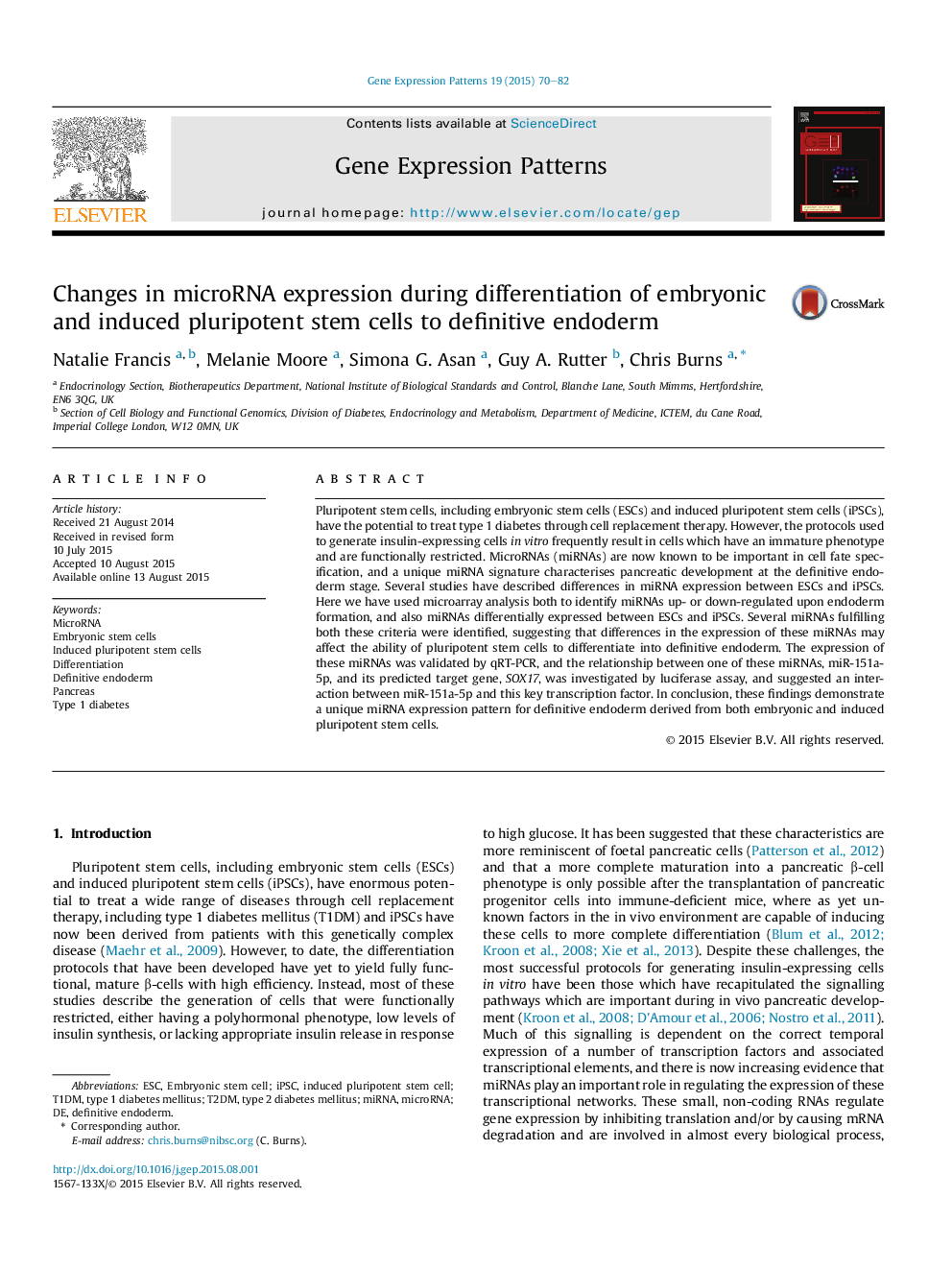| Article ID | Journal | Published Year | Pages | File Type |
|---|---|---|---|---|
| 2181856 | Gene Expression Patterns | 2015 | 13 Pages |
Pluripotent stem cells, including embryonic stem cells (ESCs) and induced pluripotent stem cells (iPSCs), have the potential to treat type 1 diabetes through cell replacement therapy. However, the protocols used to generate insulin-expressing cells in vitro frequently result in cells which have an immature phenotype and are functionally restricted. MicroRNAs (miRNAs) are now known to be important in cell fate specification, and a unique miRNA signature characterises pancreatic development at the definitive endoderm stage. Several studies have described differences in miRNA expression between ESCs and iPSCs. Here we have used microarray analysis both to identify miRNAs up- or down-regulated upon endoderm formation, and also miRNAs differentially expressed between ESCs and iPSCs. Several miRNAs fulfilling both these criteria were identified, suggesting that differences in the expression of these miRNAs may affect the ability of pluripotent stem cells to differentiate into definitive endoderm. The expression of these miRNAs was validated by qRT-PCR, and the relationship between one of these miRNAs, miR-151a-5p, and its predicted target gene, SOX17, was investigated by luciferase assay, and suggested an interaction between miR-151a-5p and this key transcription factor. In conclusion, these findings demonstrate a unique miRNA expression pattern for definitive endoderm derived from both embryonic and induced pluripotent stem cells.
